Onderzoek naar de betekenis van demografische trends voor de Gereformeerde Kerken vrijgemaakt.
DOCUMENT
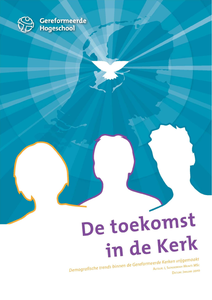
Kerkleden zetten zich vaker in voor vrijwilligerswerk dan mensen die niet aan een kerkgenootschap verbonden zijn. Toch bestaat de vrees - onder andere bij zorginstellingen - dat de vrijwillige inzet van kerkelijke mensen aan het afnemen is. Dit onderzoek beoogt het beeld voor wat betreft de orthodox-protestantse (gereformeerde) gezindte te verhelderen. Er is aandacht besteed aan zowel de inzet van leden van orthodox-protestantse kerken (aanbodkant) als aan vrijwilligersinzet specifiek in zorg- en hulpverleningsinstellingen (vraagkant).
DOCUMENT
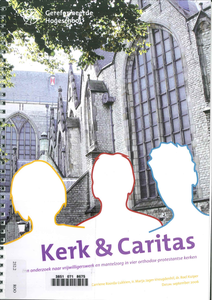
Vrijwilligers zijn onmisbaar bij het in leven houden van de bijna 100 monumentale kerken die eigendom zijn van de Stichting Oude Groninger Kerken (SOGK). Het is dus belangrijk om te luisteren naar de ideeën en meningen van deze vrijwilligers, naast de opvattingen van experts. Hoe denken vrijwilligers over zulke energiebesparende maatregelen? Welke cultuurhistorische waarden vinden zij het belangrijkst? In hoeverre worden deze waarden naar hun mening aangetast door energiemaatregelen? In ons onderzoek zijn vier lokale commissies van vier SOGK-kerken in Groningen benaderd. Uit het onderzoek bleek dat vrijwilligers sterk gekant waren tegen energiemaatregelen die het aanzien van de kerk sterk zouden veranderen, zoals isolatie. Ook dubbel glas kon niet op de goedkeuring van vrijwilligers rekenen. Vloerverwarming werd gezien als de beste optie, dit verandert het aanzien van de kerk niet en bovendien zijn in de onderzochte kerken de vloeren niet meer origineel. De mening over zonnepanelen op het dak van de kerk was erg verschillend, van grote weerstand tot ‘geen probleem’
LINK
In onze samenleving zou niemand zich eenzaam of buitengesloten mogen voelen. Toch blijkt dit binnen de Nederlandse samenleving niet voor iedereen te gelden. Uit diverse onderzoeken blijkt hoe groot de impact van eenzaamheid is. Iedereen ervaart wel eens een gevoel van eenzaamheid, maar de impact van langdurige eenzaamheid door het gemis van diepgaande contacten is enorm. Dit kwalitatieve onderzoek gaat nader in op hoe eenzaamheid binnen de gemeente Woerden wordt ervaren. Woerden werd in het verleden als meest gemiddelde gemeente van Nederland gezien en blijkt ook op dit gebied niet enorm af te wijken van de landelijke bevindingen. Ook in Woerden ervaren veel mensen gevoelens van eenzaamheid en gebrek aan zingeving. Hoewel binnen de gemeente Woerden vele enthousiaste, kundige professionals en vrijwilligers binnen een grote verscheidenheid aan welzijnsorganisaties en kerkgemeenschappen hard werken om eenzaamheid terug te dringen of te voorkomen, zijn er volgens de onderzoekers nog stappen te zetten. Met name een zorgvuldige verwijzing en vindbaarheid van de diverse organisaties zou kunnen voorkomen dat inwoners door de bomen het bos niet meer kunnen vinden of hulp krijgen die geen recht doet aan hun persoonlijkheid en interessegebieden. Een praktische verwijskaart helpt zowel professionals, vrijwilligers als de inwoners op weg om voor iedere zorgvraag passende ondersteuning te vinden. Daarnaast kunnen ook inwoners zelf helpen bij het terugdringen van eenzaamheid door meer oog te hebben voor mensen die mogelijk kampen met gevoelens van eenzaamheid of zingeving binnen hun woonomgeving of kerkgemeenschap. Het gesprek aangaan en een oprecht luisterend oor bieden maakt al dat iemand zich gezien en gehoord voelt en weer mee gaat tellen. De onderzoekers hopen dat de aanbevelingen uit dit rapport het welzijn van de inwoners helpen te verbeteren en een bijdrage leveren aan een gezonde samenleving waarin iedereen meetelt en wordt gezien.
MULTIFILE

In Nederland is in 2007 de Wet maatschappelijke ondersteuning ingevoerd. Omtrent de inschakeling van kerken daarbij leven nog veel vragen en onduidelijkheden waarop verdere bezinning en toerusting noodzakelijk is. Maar de vraag kwam op hoe nog gerichter gewerkt kan worden aan ondersteuning en toerusting, eventueel via een cursus of verdere bezinning. Naar dit laatste is in de periode oktober 2007 - voorjaar 2008 dit onderzoek uitgevoerd, met als doel in kaart te brengen waar de vragen liggen en via welke weg diaconaal betrokkenen en gemeentelijke beleidsmakers hierin het beste ondersteund kunnen worden.
DOCUMENT
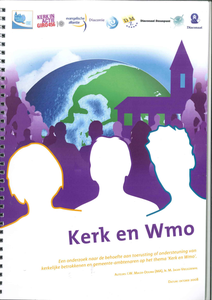
Onderzoek naar het functioneren, de taakopvatting en de (gewenste) competenties van vrijgemaakt-gereformeerde diakenen. Het onderzoek is in 2007 uitgevoerd door medewerkers van het Centrum voor Samenlevingsvraagstukken van de Gereformeerde Hogeschool. Het onderzoek is uitgevoerd in opdracht van het Generaal Diaconaal Deputaatschap (GDD) van de Gereformeerde Kerken vrijgemaakt (GKv). Het GDD wilde een duidelijker beeld van de gereformeerde diaken, mede in het licht van de Wmo en de visie op de betekenis van diaconaat in de lokale samenleving. De hoofdvragen van het onderzoek zijn: Welke taken in kerk en samenleving dienen diakenen uit te voeren en over welke competenties dienen diakenen te beschikken om deze taken in kerk en samenleving te kunnen uitvoeren?
DOCUMENT

Een grote survey heeft in november 2013 plaatsgevonden onder drie denominaties, de Christelijk Gereformeerde Kerken (CGK), de Nederlands Gereformeerde Kerken (NGK) en de Gereformeerde Kerken vrijgemaakt (GKv). Voorafgaand aan deze survey zijn zes groepsinterviews gehouden met diaconieën van genoemde kerken. De hoofdvraag van het onderzoek luidt: In hoeverre wordt momenteel diaconaat door diaconieën en gemeenteleden gestalte gegeven, welke rol speelt gerechtigheid hierin en wat moet er gebeuren om te komen tot een bloeiend diaconaat 2020? Uit het onderzoek komt naar voren dat de wens tot een meer naar buiten gericht diaconaat leeft, maar het moet dan wel goed georganiseerd zijn. Evangelieverkondiging is bij diaconaat ondergeschikt aan het geven van hulp aan gemeenteleden en aan niet-gemeenteleden.
DOCUMENT
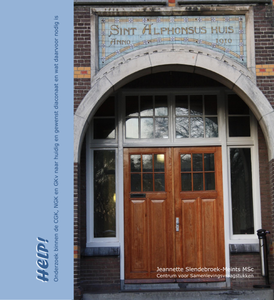
Onderzoek naar de wensen en verwachtingen van huidige en toekomstige cliënten, hun kinderen en de medewerkers van een christelijke zorginstelling, met name ten aanzien van de invulling van de identiteit van de zorginstelling en de betrokkenheid van lokale kerken daarbij.
DOCUMENT
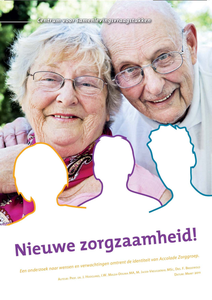
In tal van dorpen vallen ongepland gaten in de bebouwing. Woningen, basisscholen, kerken en winkels komen leeg te staan, panden worden gesloopt. Herbestemming is een optie, maar dat vergt vaak fysieke aanpassingen die kunnen botsen met de cultuur-historische waarde van het pand of dorpsgezicht.
LINK
Buildings without an actual function but still very important in the set out of Appingedam and very interesting from an architectural and historical point of view. Advise on how to organise new functions in these old buildings through a church-carrousel.
DOCUMENT
